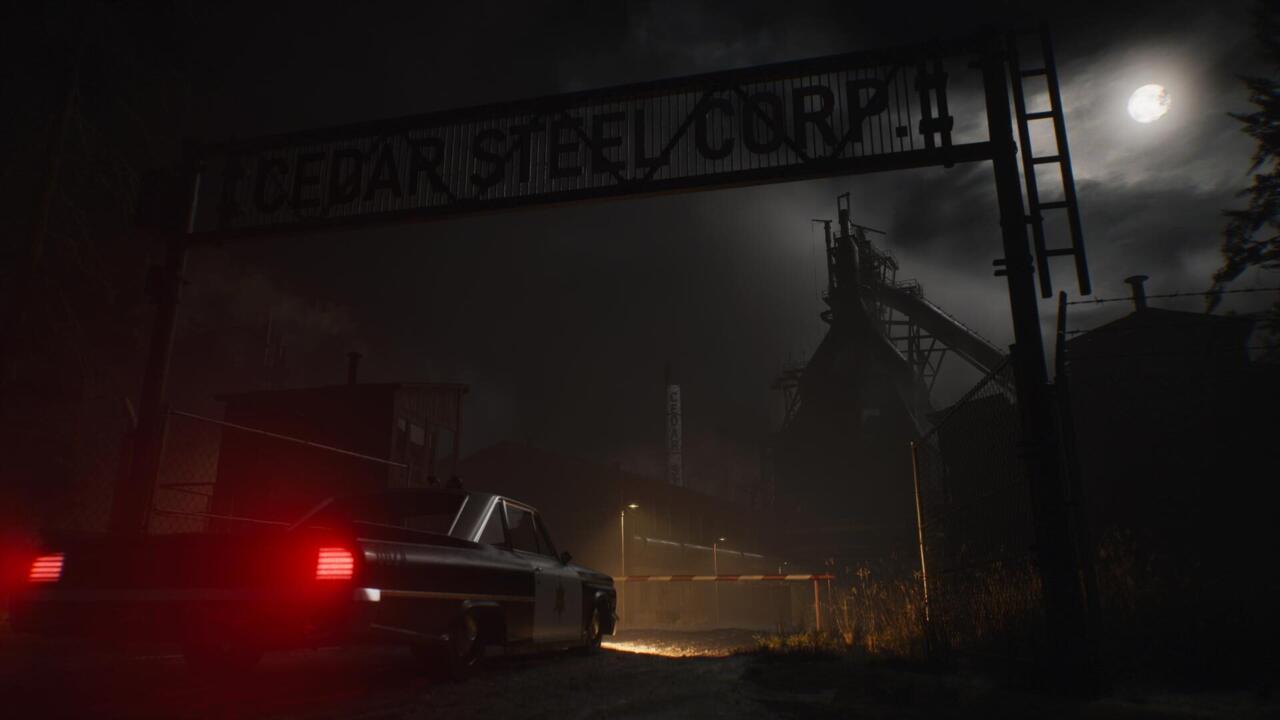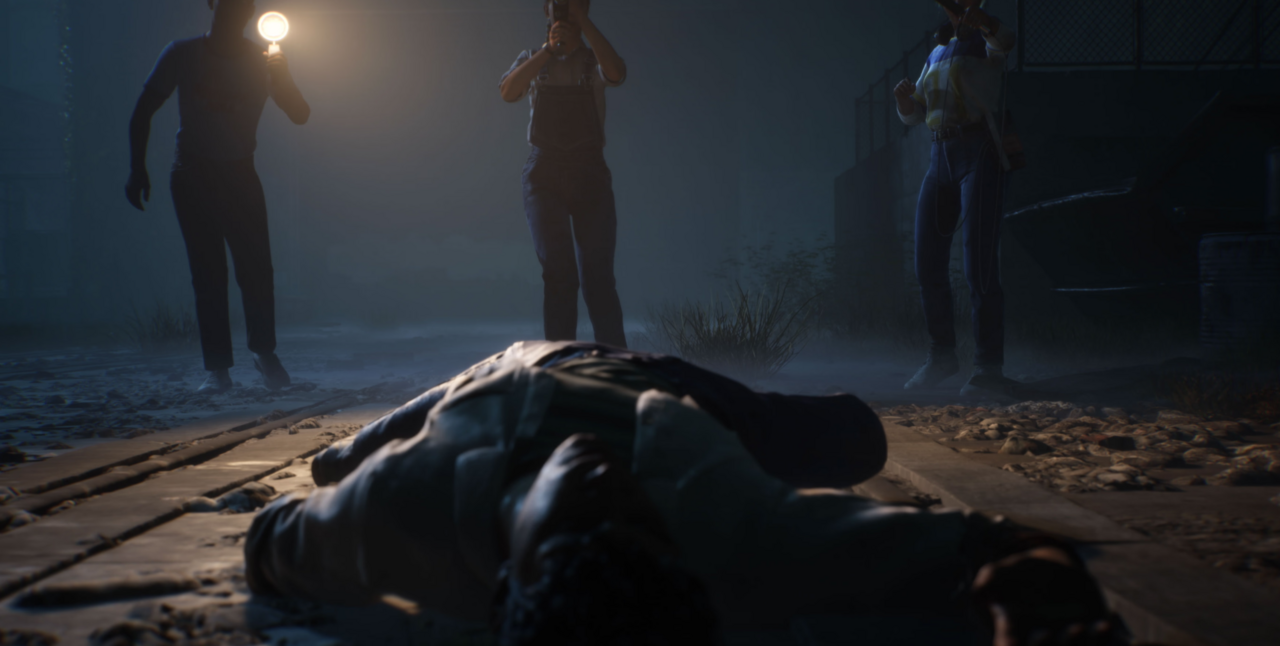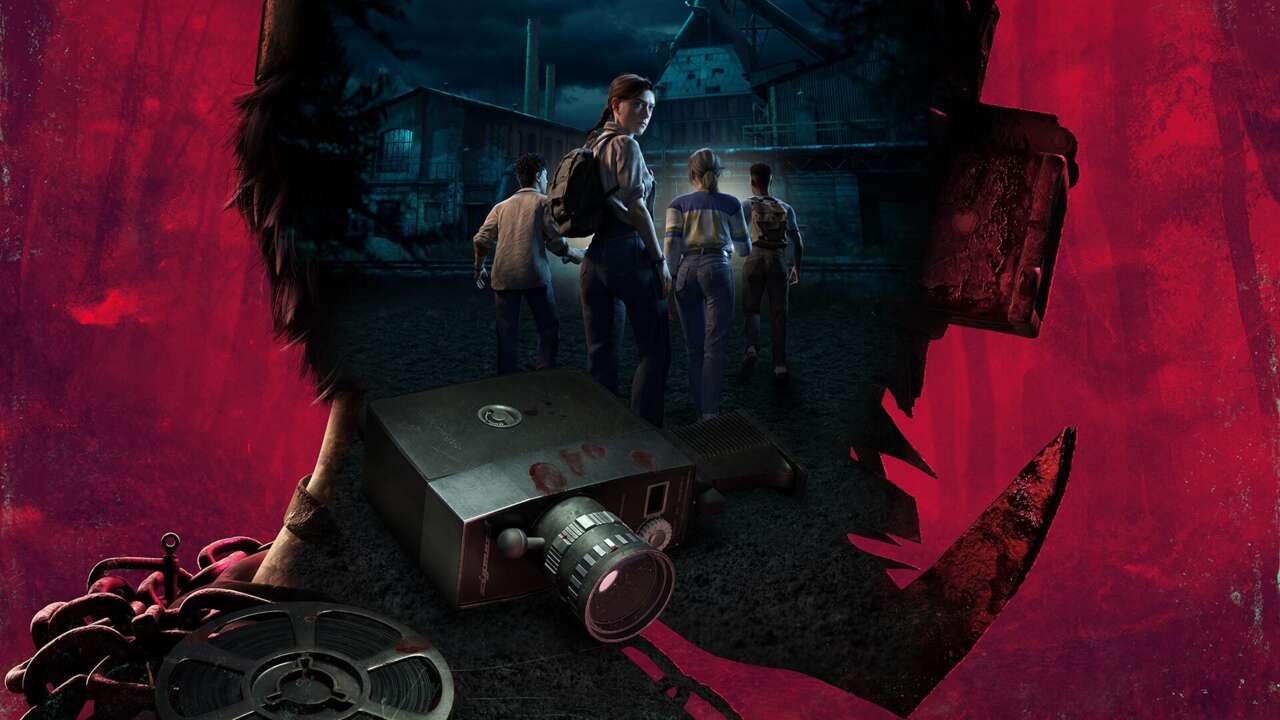Supermassive and Behaviour have each been instrumental in defining the genre over the past decade. The former’s horror games have come as cinematic choose-your-own-adventure stories where the fates of multiple playable characters come down to your choices, often made in high-stress situations. Meanwhile, the latter blazed a trail now well-trodden: asymmetric multiplayer horror. Dead By Daylight’s (DBD) Fortnite-like approach of swallowing up many major horror icons into one space has given it not just staying power, but a twisted Disneyland vibe. Now, with The Casting of Frank Stone, the pair combine forces to tell a Dead By Daylight origin story that will appeal most to fans of the PvP game, though I can say, as a casual DBD fan, I found it enjoyable on its own merits too, despite its issues.
Frank Stone plays much like Supermassive’s run of games that began with 2015’s Until Dawn. It is a gameplay-light, movie-like experience that you get to direct, in a sense. You’ll control several characters, form their relationships with others in the story, and, most excitingly, try to keep them alive through a story full of quick-time events (QTEs) and doomed choices that can get them killed off permanently.
For me, this formula hasn’t outstayed its welcome yet, and I’m not sure it ever will. It feels like the kind of game I would happily play each autumn for the rest of my life, even as the narrative merits vary by game. Historically, I’ve found that no Supermassive script truly stands up to scrutiny, and Frank Stone is no different in that regard. Because of the branching paths, sometimes you may see a scene that feels a bit off, like it better suits a choice I didn’t make and never saw.
That’s a jarring and commonplace flaw of horror games like Frank Stone, The Quarry, and The Dark Pictures Anthology. If they were strictly movies, I’d certainly be harsher on them. However, the interactive elements that make Frank Stone a cinematic game rather than a traditional movie help overshadow some of its flaws. Living in these scary stories is fun. Knowing I can and will drastically affect the outcome at numerous points throughout the game kept me glued to this game like its predecessors. Frank Stone isn’t my favorite of them, but as Supermassive continues to chase the high of Until Dawn, I welcome the team’s annual attempts to rebottle that magic with projects like this one.
When I got one of my main characters killed early on in Frank Stone, it was shocking, but in a good way. I want there to be stakes, and even when Frank Stone didn’t always mesh its story beats together as cohesively as I wish it would’ve, I remained invested because my fingerprints still seemed to be all over the plot. Characters’ relationships were altered on my watch, and I even pulled a couple back from breaking up (only to swiftly get one of them cut in half–oops).
Outside of QTEs that abide by your difficulty settings–pro tip: play on Hard for the most chaotic outcomes–gameplay consists of many dialogue options, almost always binary unless you unlock additional things to say by exploring the world and gathering collectibles with lots of backstories tied to them. This makes scanning nearby tables and corners for book covers, documents, and other hidden items a valuable use of your time, though it does once again reveal a very video-gamey problem for these projects chasing Hollywood pacing; in movies, the protagonist doesn’t run along the walls seeking out Easter eggs before they get on with their mission. But like some narrative disconnects, I find these concessions acceptable enough when the enjoyment of living out these dark tales is doing most of the heavy lifting anyway.
Supermassive also built a new combat-light mechanic into Frank Stone. Combat is uncommon in its library of titles and it should perhaps stay that way, as the shallow feature ends up not being compelling. Players are meant to point an object at the titular monster to keep him at bay throughout the story, but it’s always so easy that it becomes boring almost immediately.

What’s worse in Frank Stone, and it’s something of a legacy issue itself, is the frequent technical issues . It’s a good-looking game but it stutters a lot when transitioning between scenes. Not all of them, but too many. This pulls me out of the experience more than some loose narrative threads do. I’m not sure what can be done to fix this, but it’s a problem that’s been in other Supermassive games like this, even though this is build on a newer version of Unreal Engine.
The problem is too apparent to have gone unseen, which suggests the team saw it and sent it out anyway. I’ve found I care about occasional bugs less than most, but when a game’s primary appeal is its cinematic quality, these kinds of visual flaws weigh more heavily.
In story terms, Frank Stone is, like its source material, a mash-up of different genres. It opens like a slasher, quickly descends into supernatural territory, and even throws in some body horror before the end credits. I loved the design of Frank Stone himself, and if you think his first appearance is aesthetically underwhelming, just wait, he has more to unveil in time. Both he and the game’s playable characters look like they belong in the DBD world, and I found that indicative of how the two teams closely collaborated to stay true to the source.
Being set in Behaviour’s horror universe affords the game all of the narrative leeway that comes with that setting. For those well-versed with that lore, what this means may already be known to you. For the uninitiated, learning about some of the game’s reveals in the second half of its six- to eight-hour story is best left for you to discover on your own. In either case, Frank Stone’s story is enjoyable.
It helps to know the DBD universe, and the more intimately you know it, the more you’ll get out of its countless secrets and nods to the multiplayer game. This game’s main purpose is to reveal the story behind DBD’s Big Bad, The Entity, and the game’s climax will be most thrilling for players who care to see the answers to the questions they’ve had on that subject for years. But even players coming to this as Supermassive devotees or merely horror fans looking for something new can play it as a fun gorefest. Its DBD ties don’t lock anyone out of the experience; they only open a few extra windows for players coming over from Behaviour’s world. There are several nods that I found clever enough to laugh out loud. These go beyond how the game’s QTEs are redressed to look exactly like DBD’s skill checks, though I find them to be so cool that I don’t want to say any more than that.

After you beat the game once, you unlock a few welcome features if you’re interested in seeing everything the game offers. This includes a collectible-finding mode that basically gives you Batman Arkham-like Detective Vision, as well as an ability to jump into any scene and play out alternate narrative pathways. These features could almost be called quality-of-life fixes given how they erase some of the grinding that would be required without them, and they’re not the only new toys I hope become permanent in games like this. Frank Stone also uses a neat on-screen prompt to let you know when advancing past an area will make it inaccessible going forward. This removes any worry about cutting yourself off from an optional item or path prematurely. I hope all the team’s future games do this, too.
By now, those who have played Supermassive’s interactive horror “movies” since 2015 know what they’re getting with The Casting of Frank Stone. If you only want to play the next great version of that formula, this isn’t it. But for Dead By Daylight fans looking to fill out their lore bibles, prospective fans looking for an introduction to the multiplayer game, or horror obsessives who are ready to carve pumpkins and dive into a pile of crispy orange leaves, The Casting of Frank Stone is a flawed but fun horror romp just in time for spooky season, the likes of which Supermassive and I may be destined to experience together forever.
